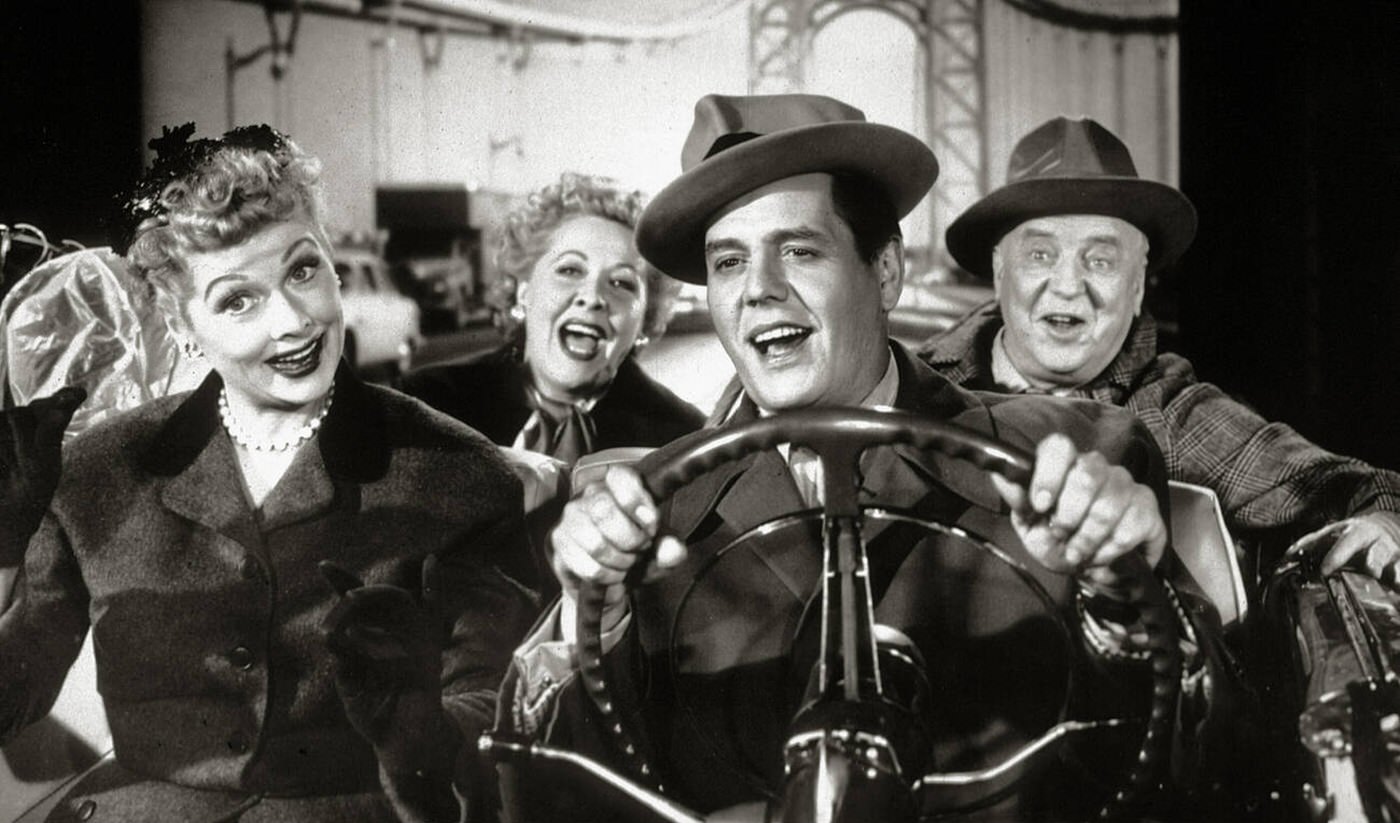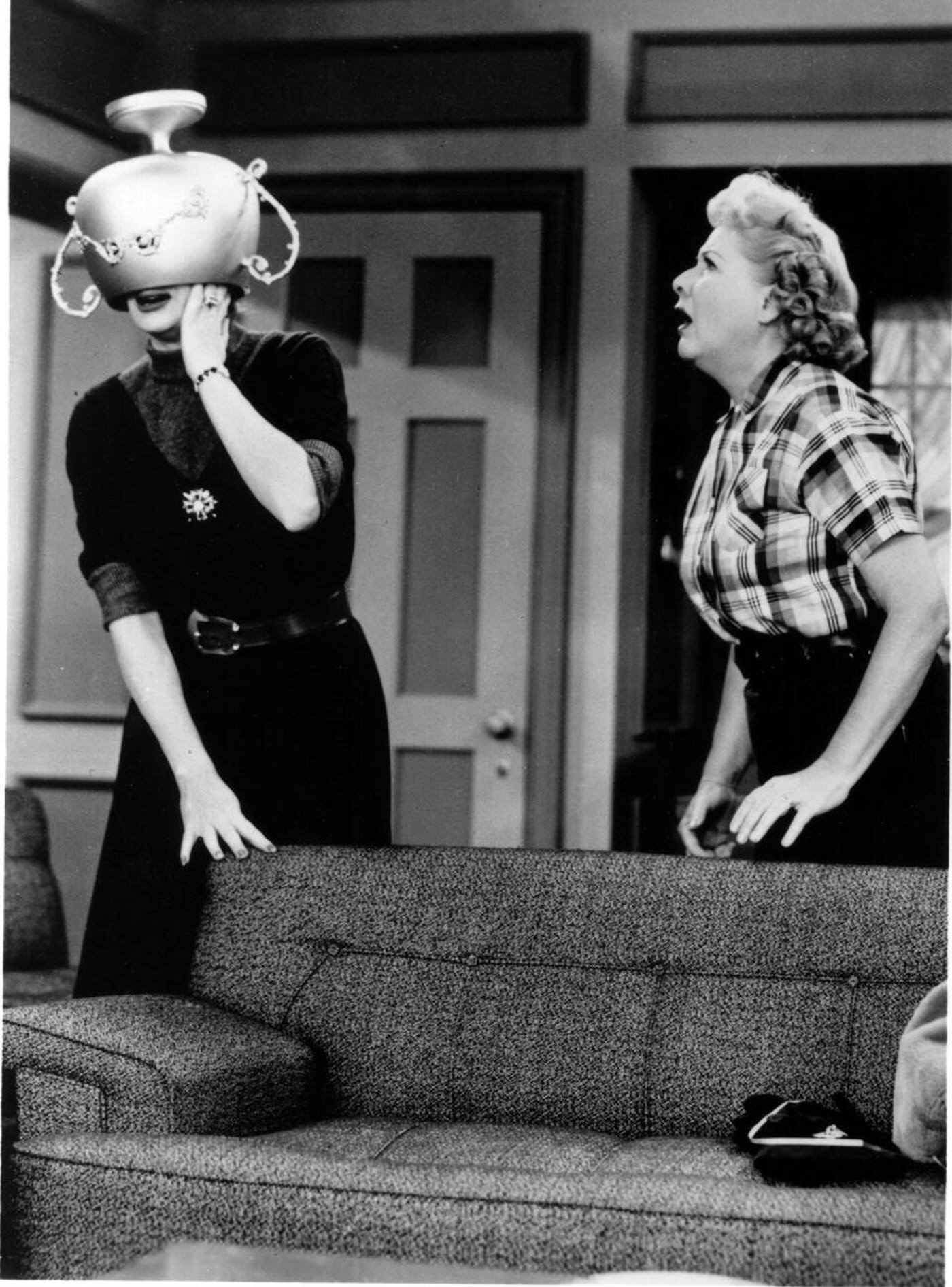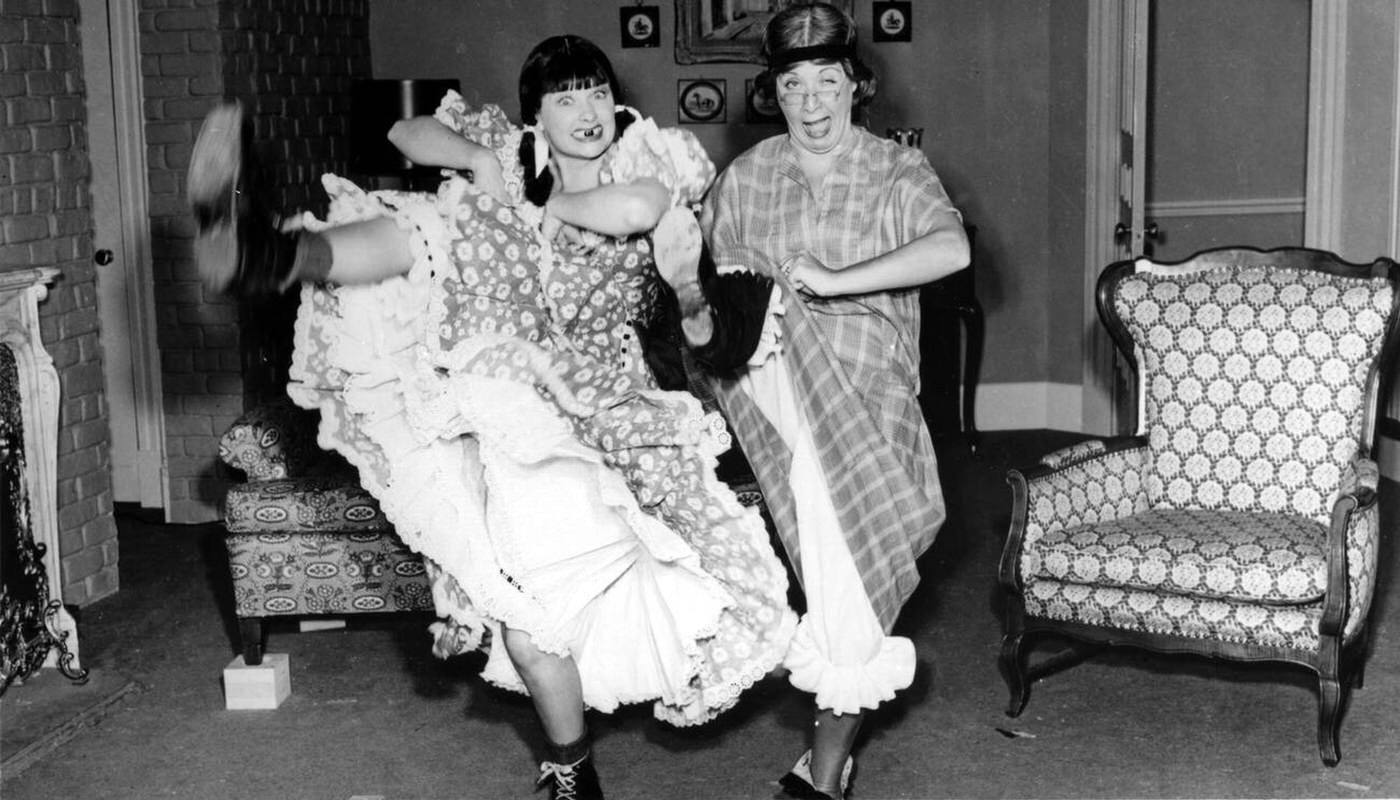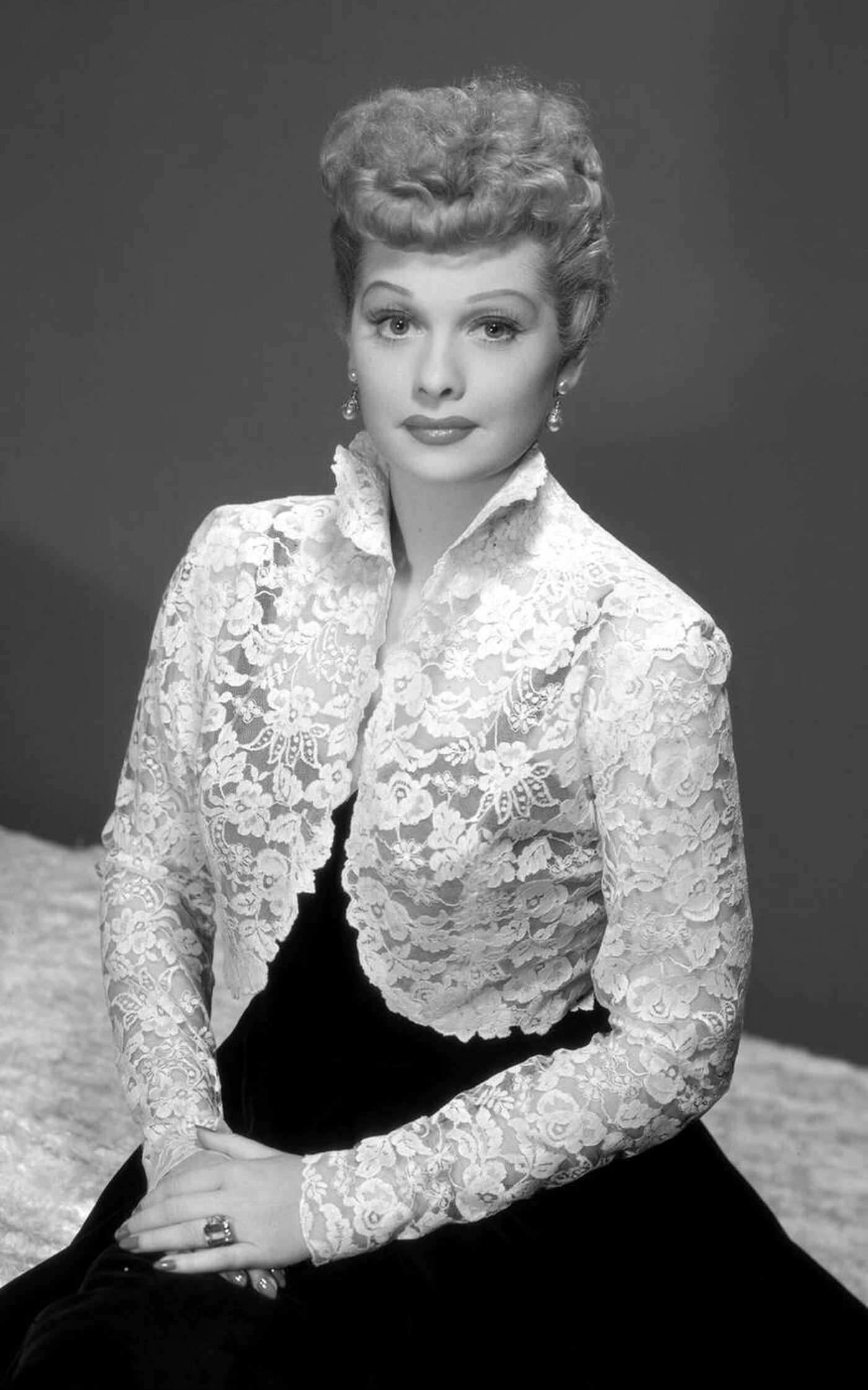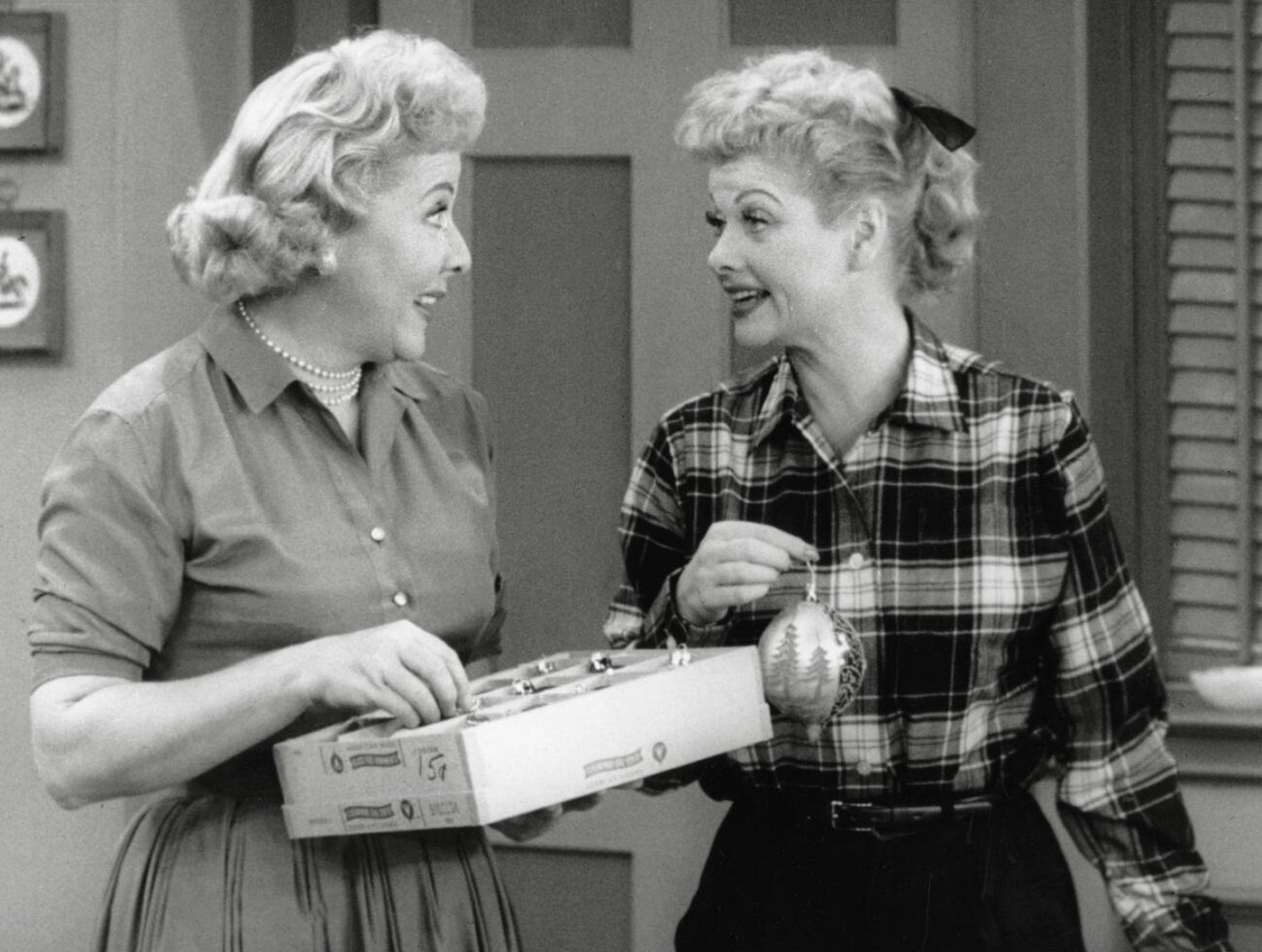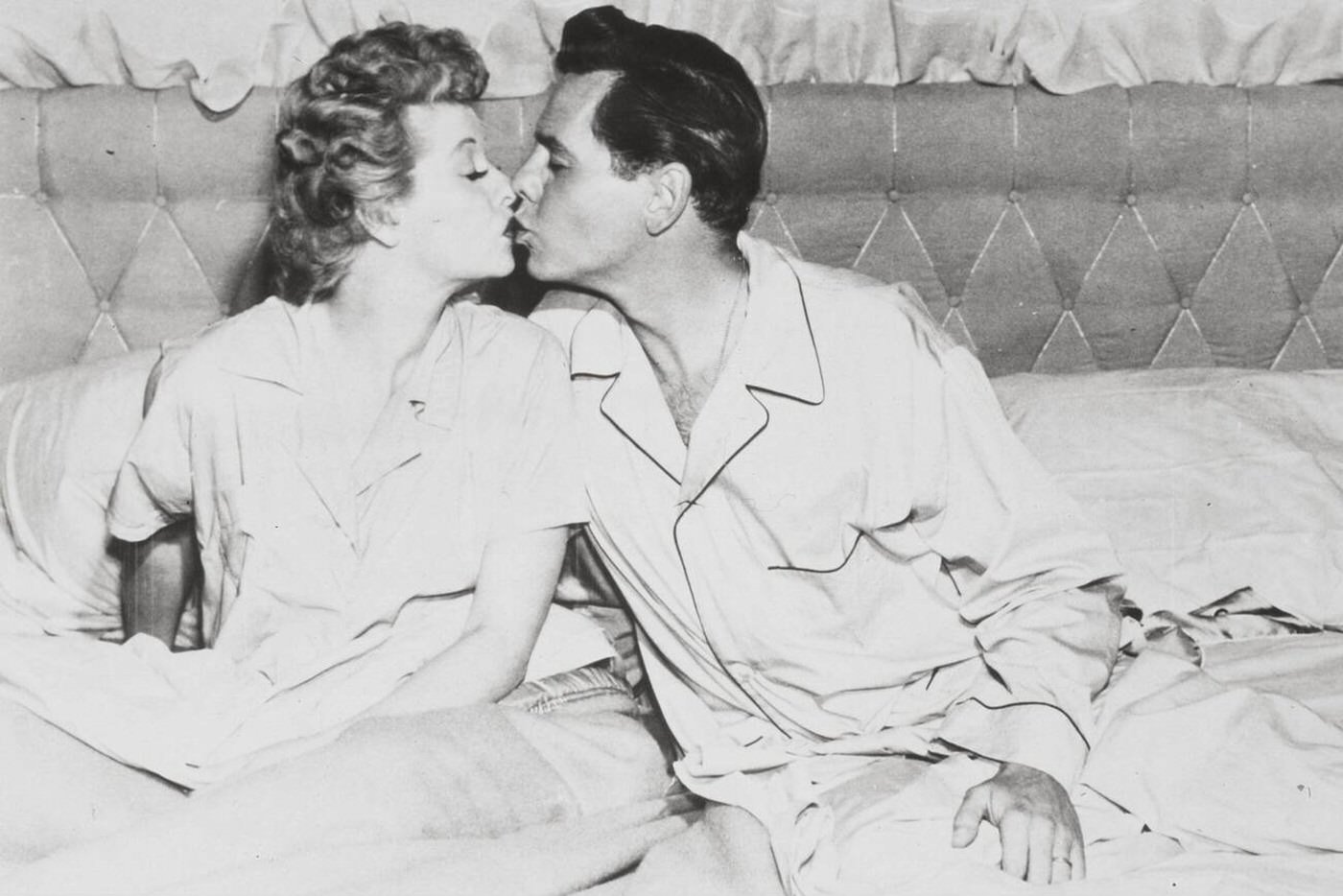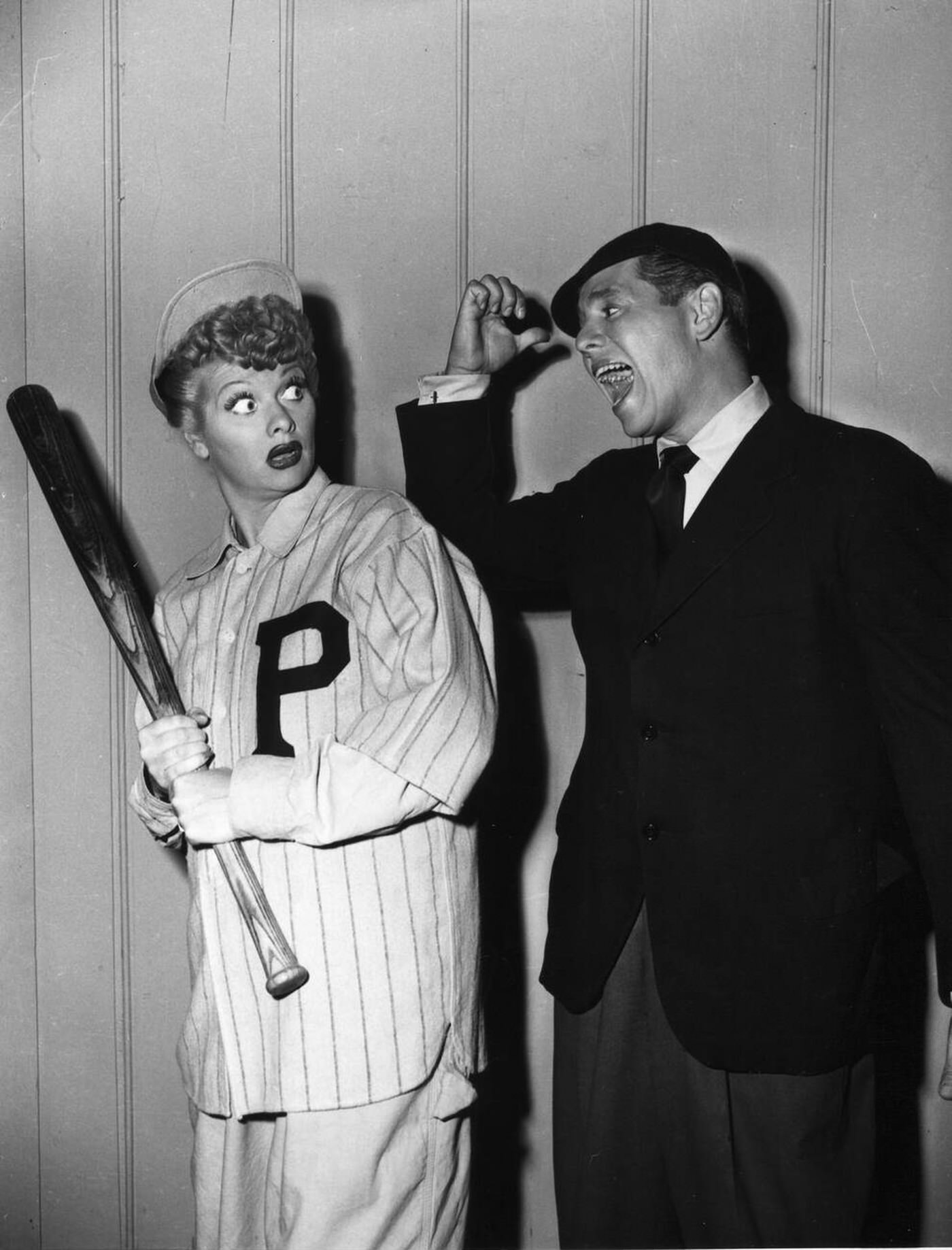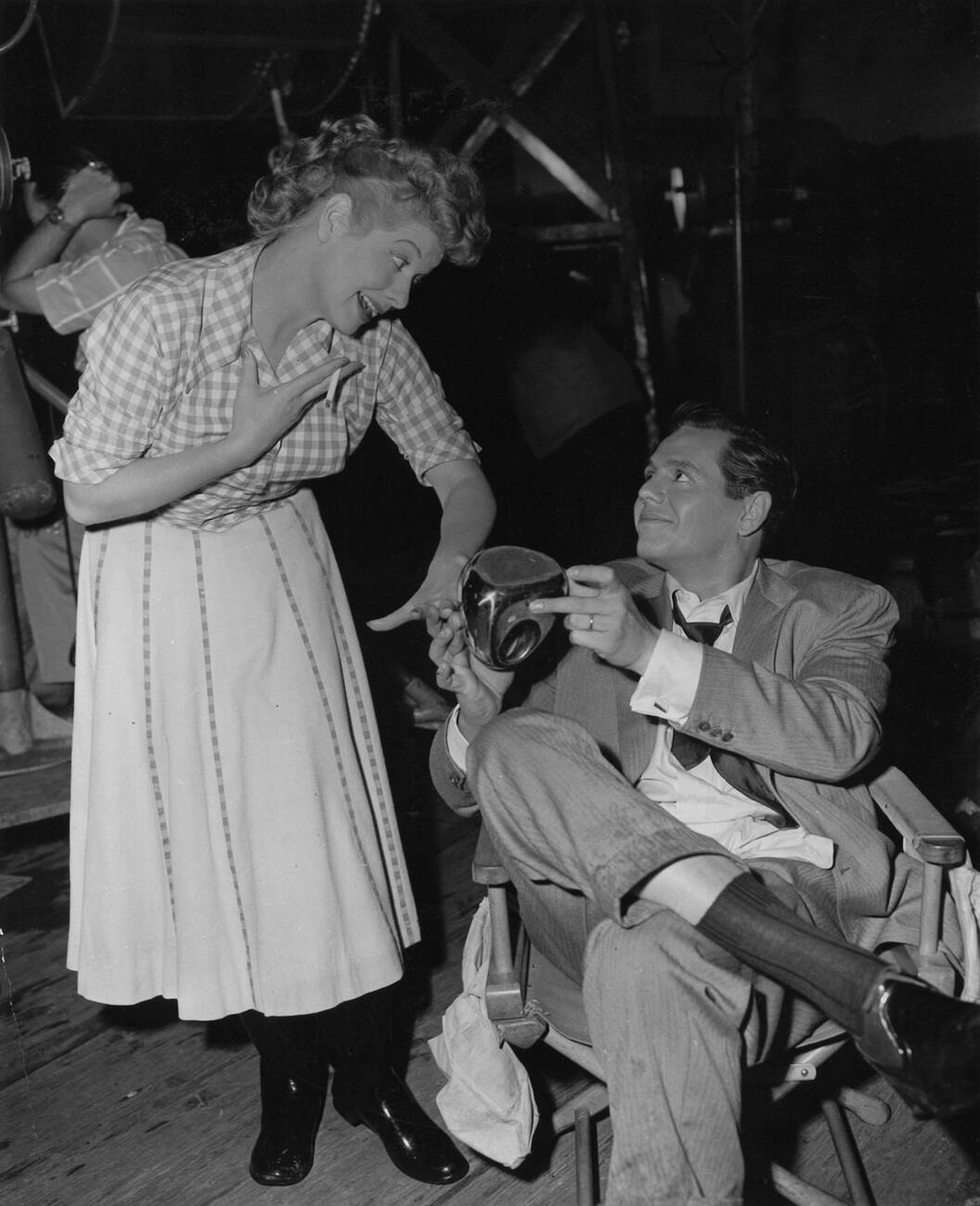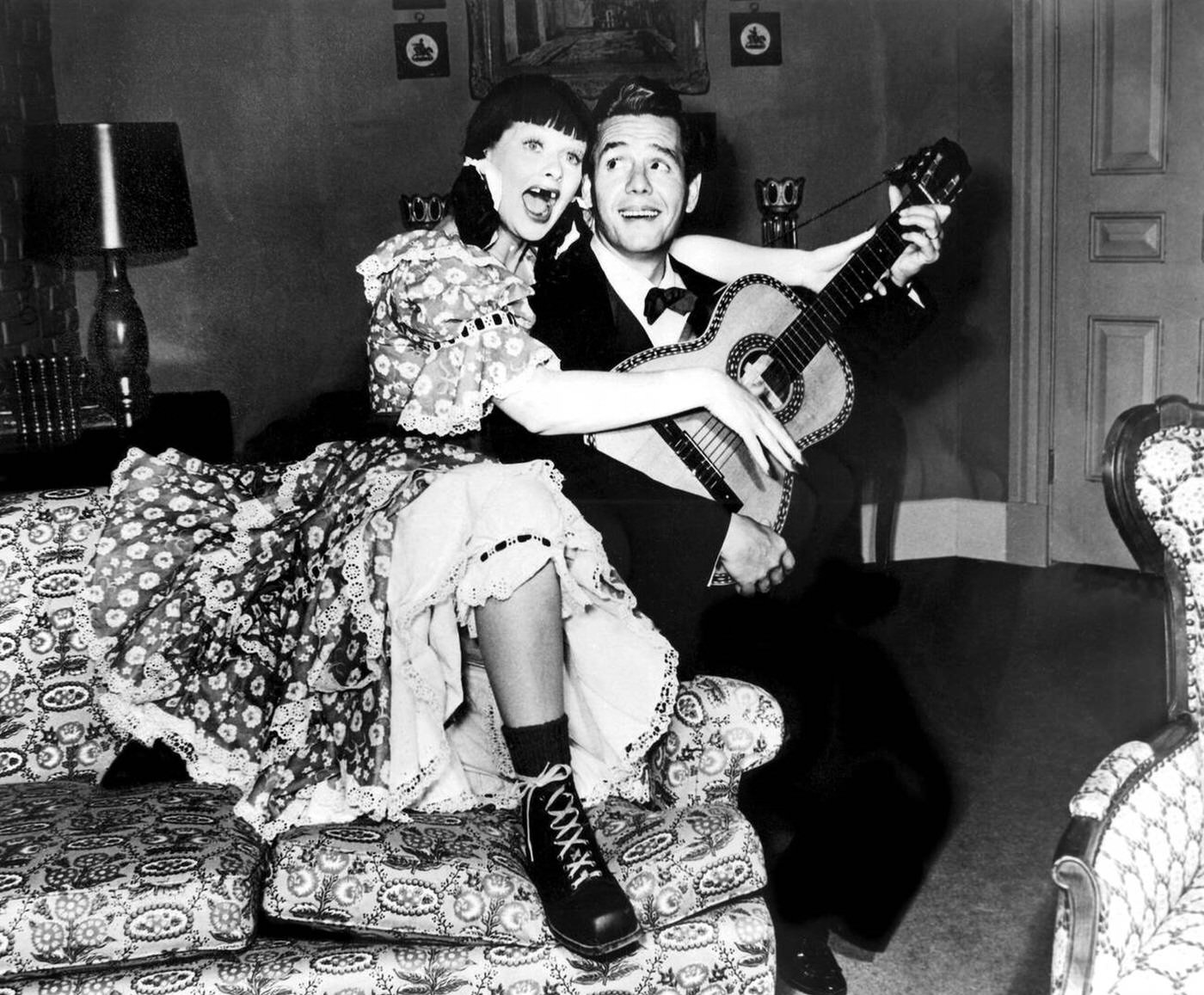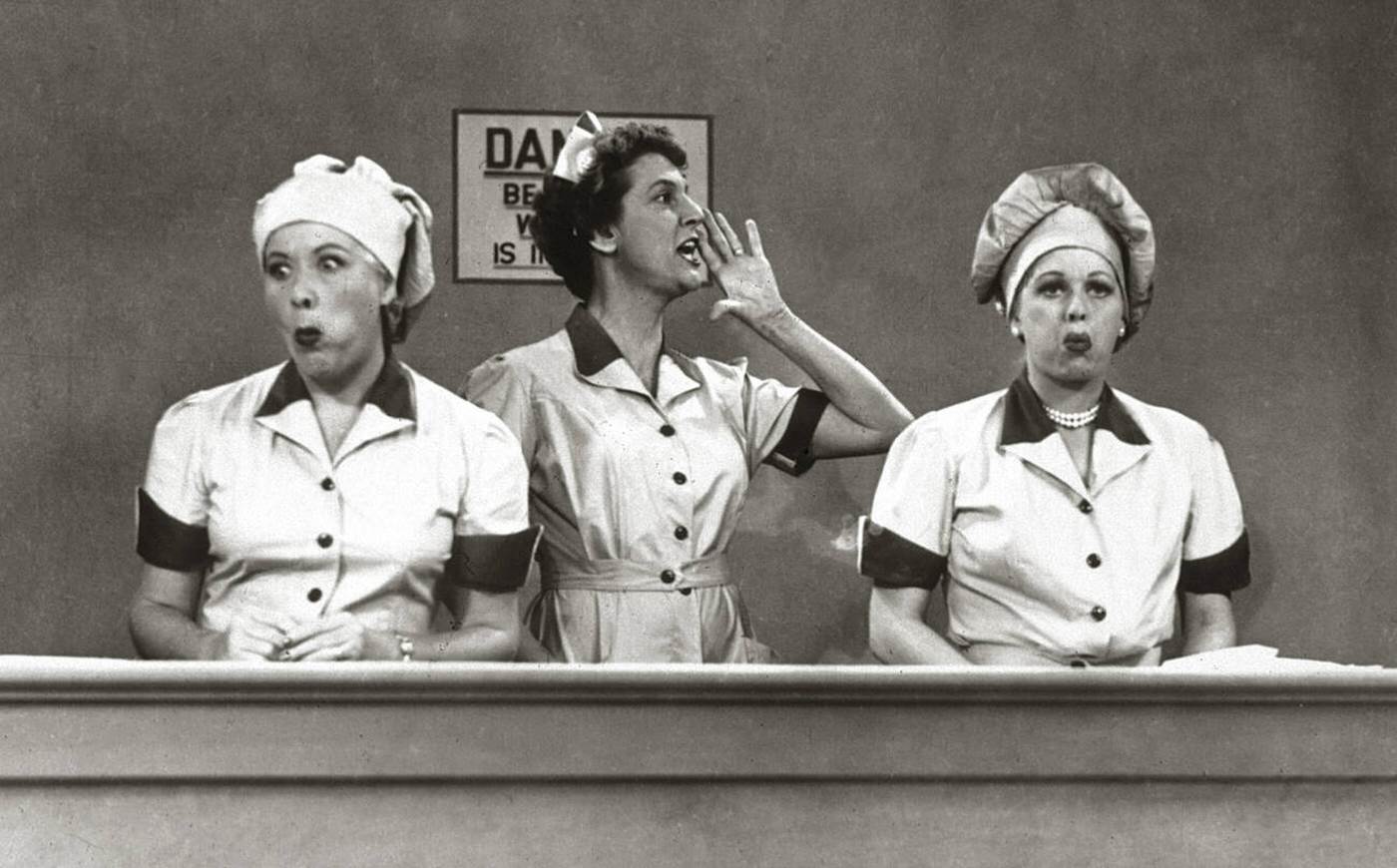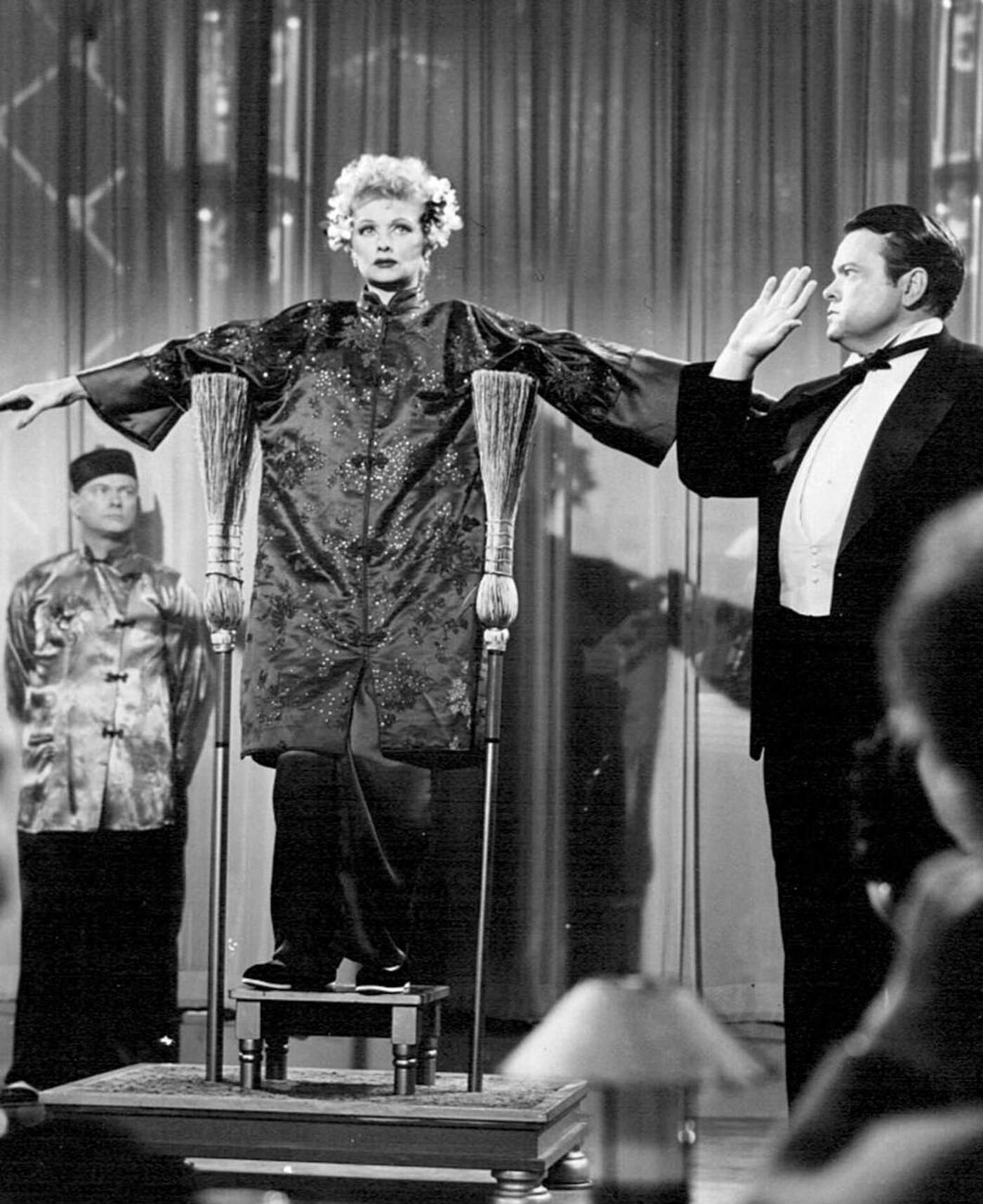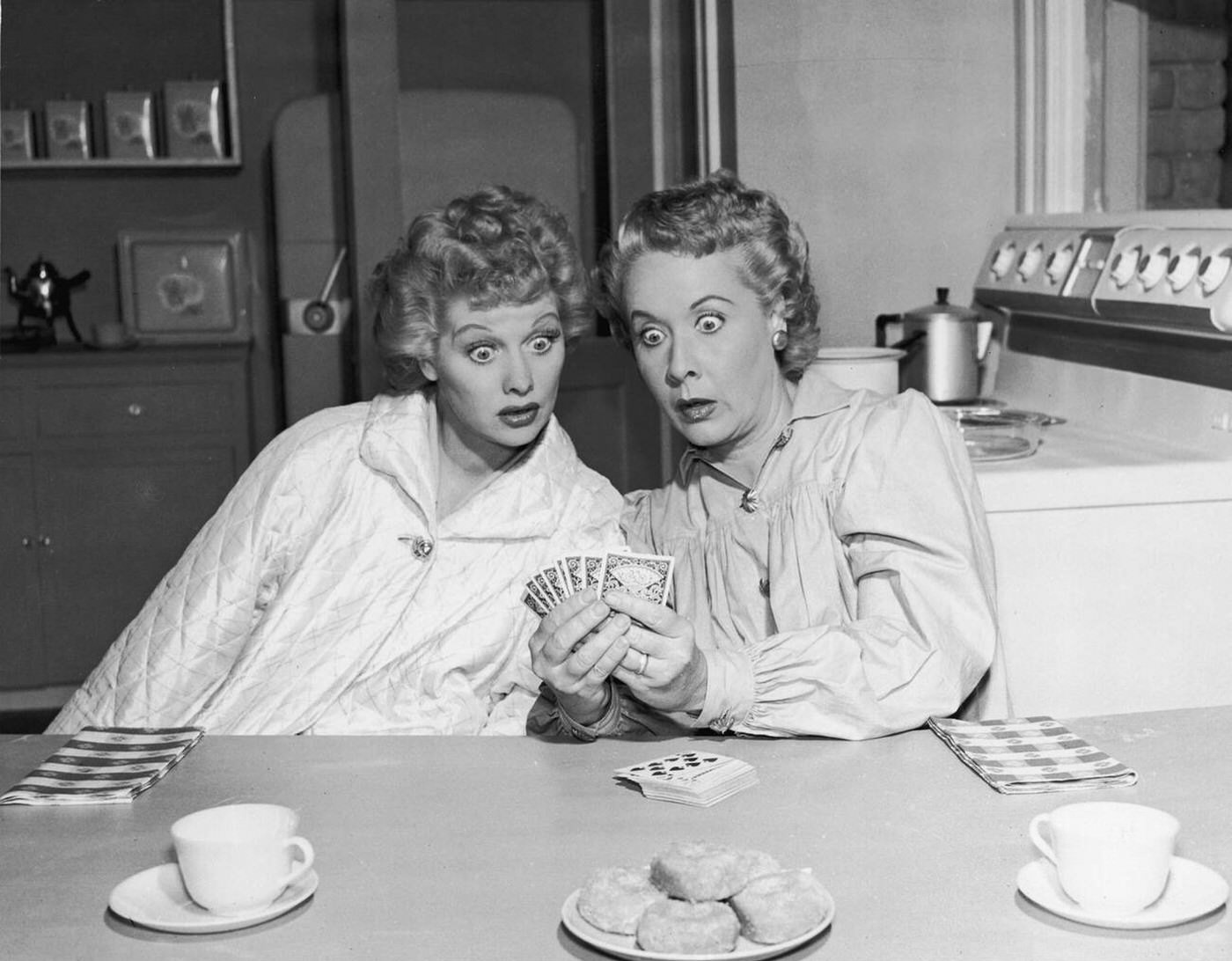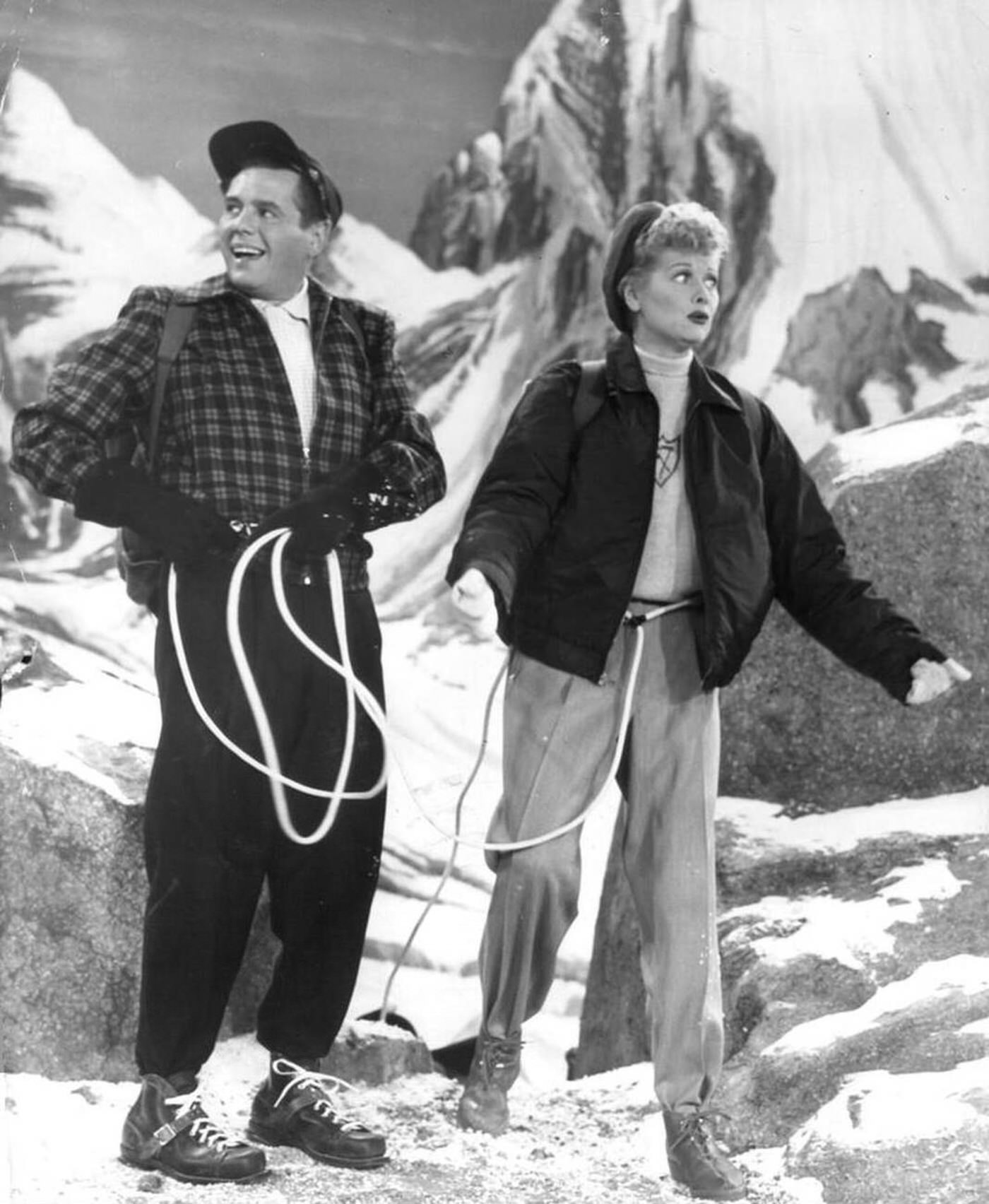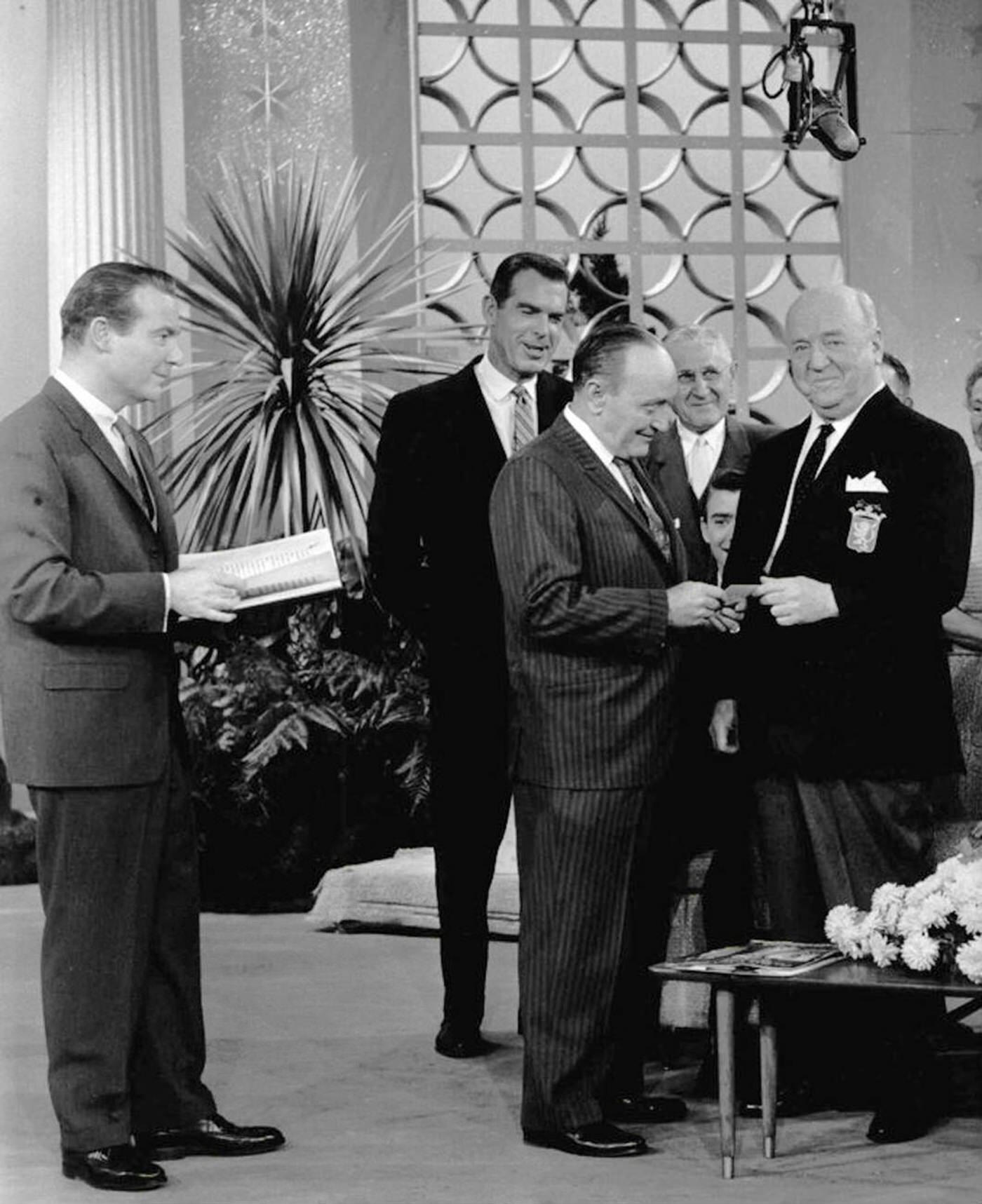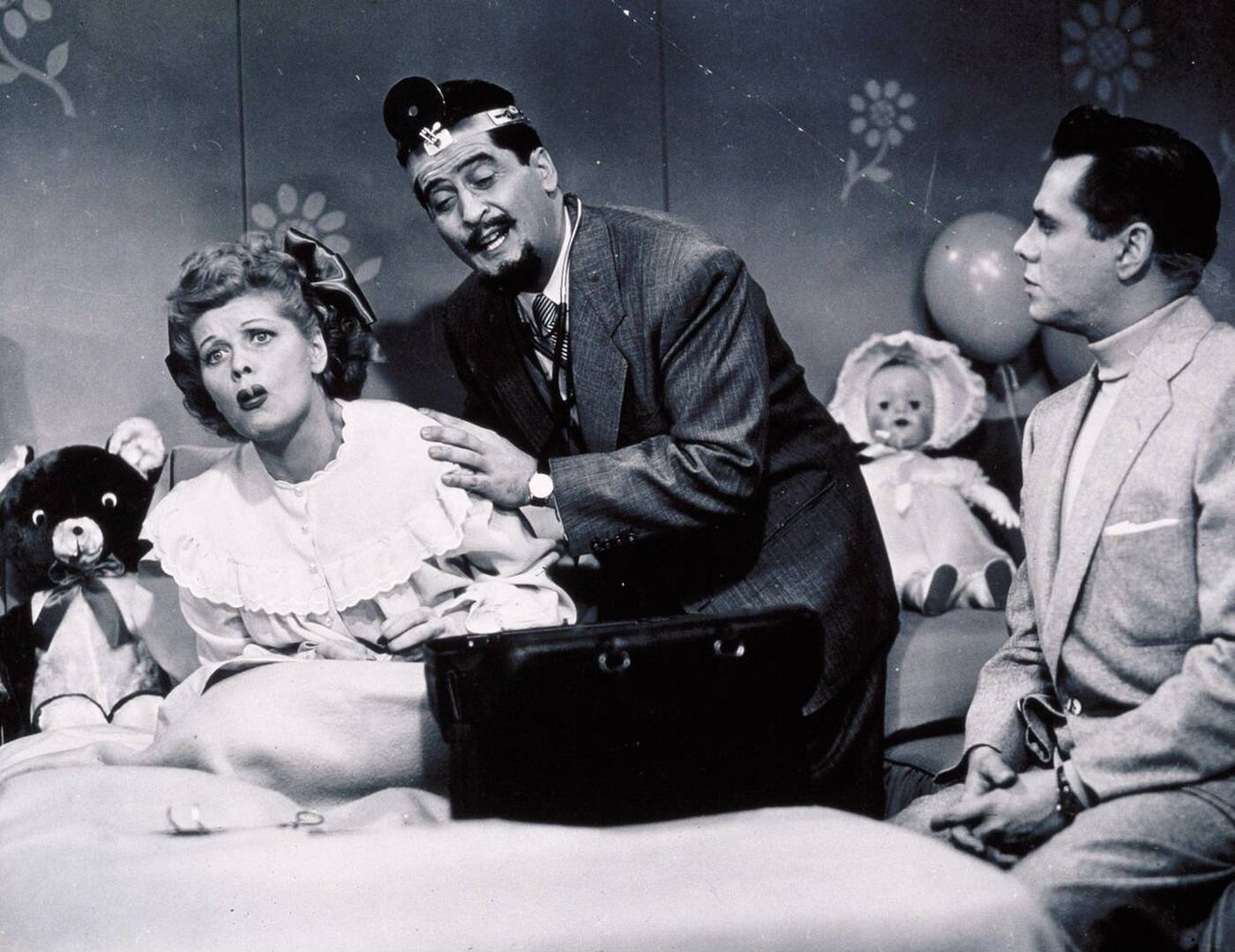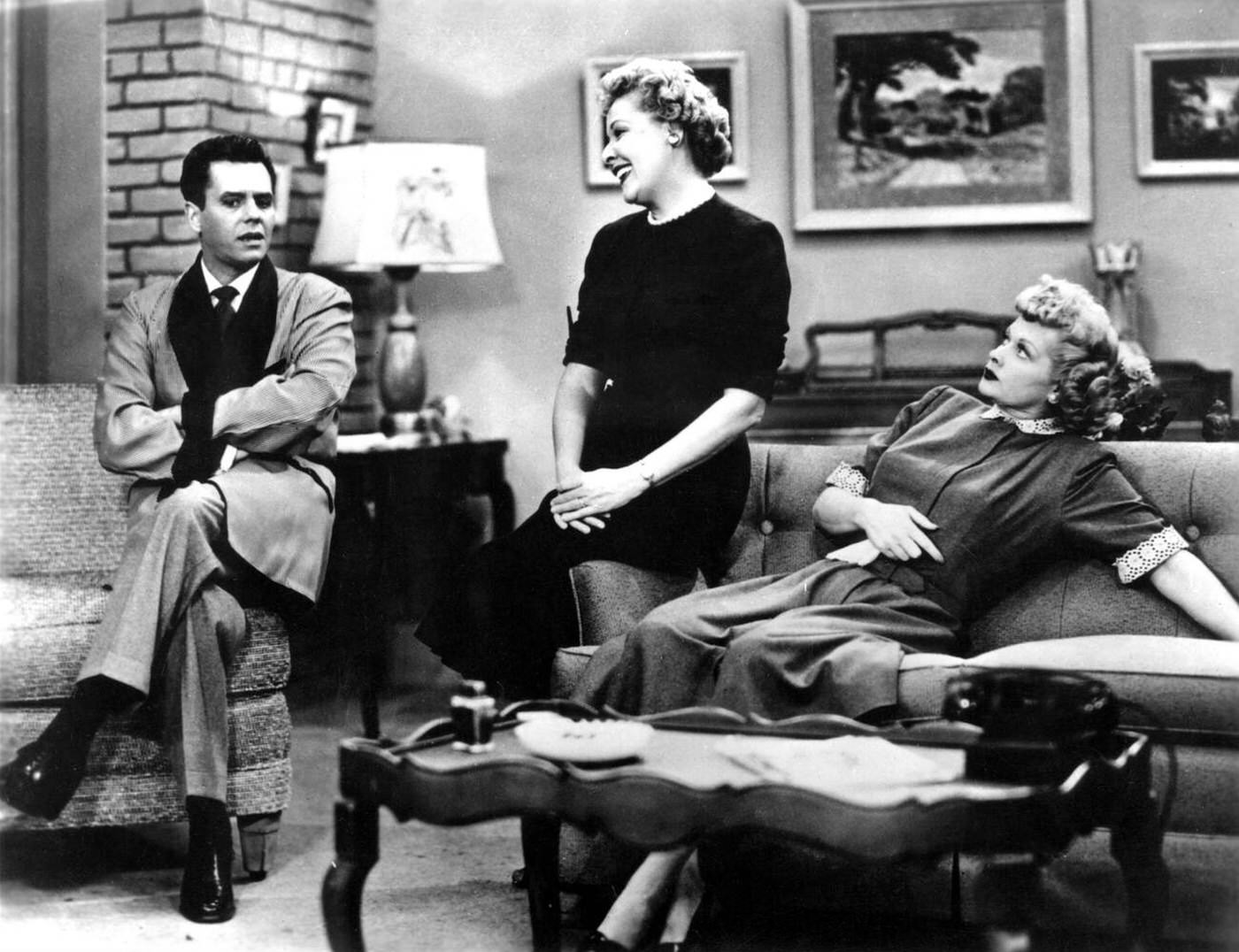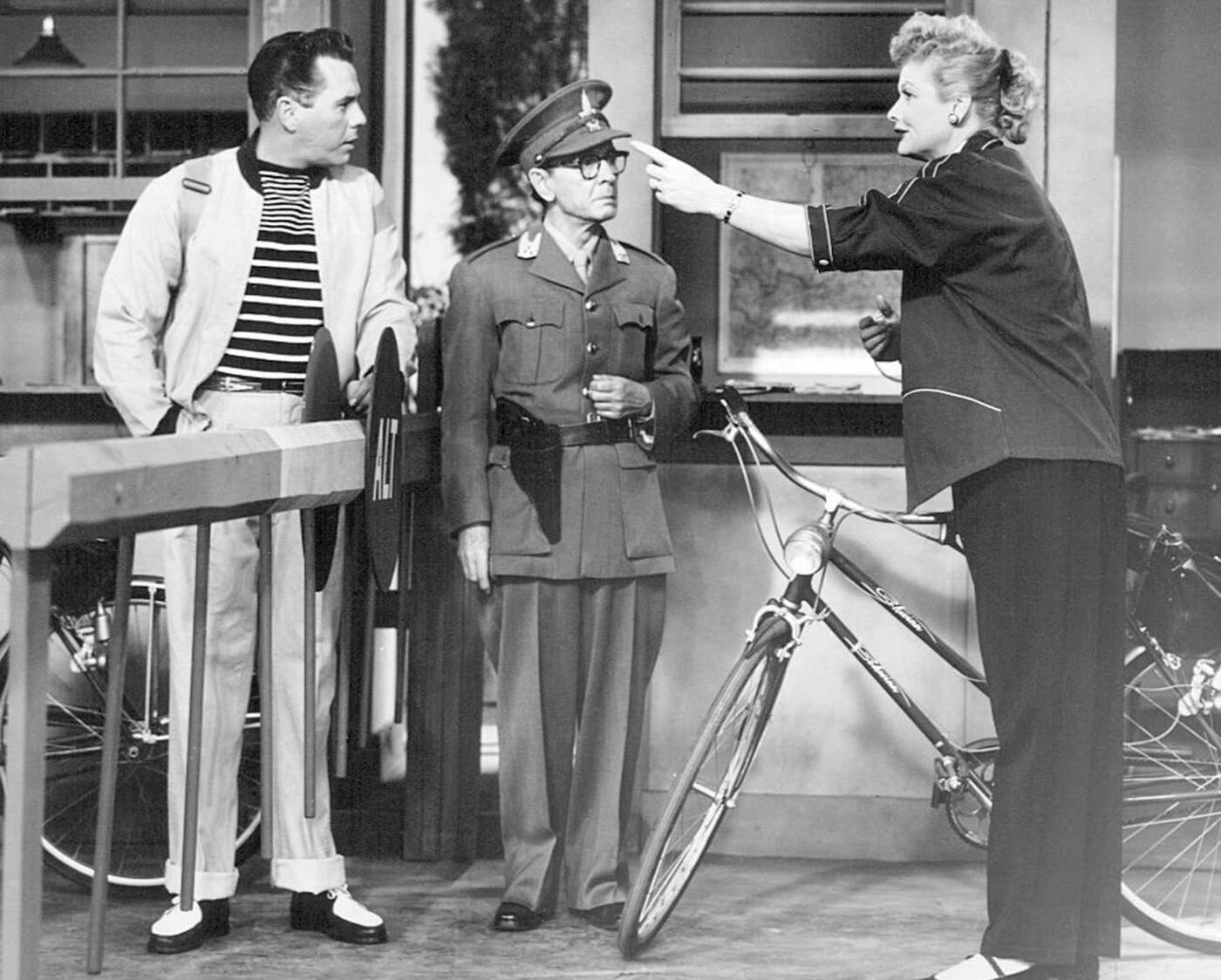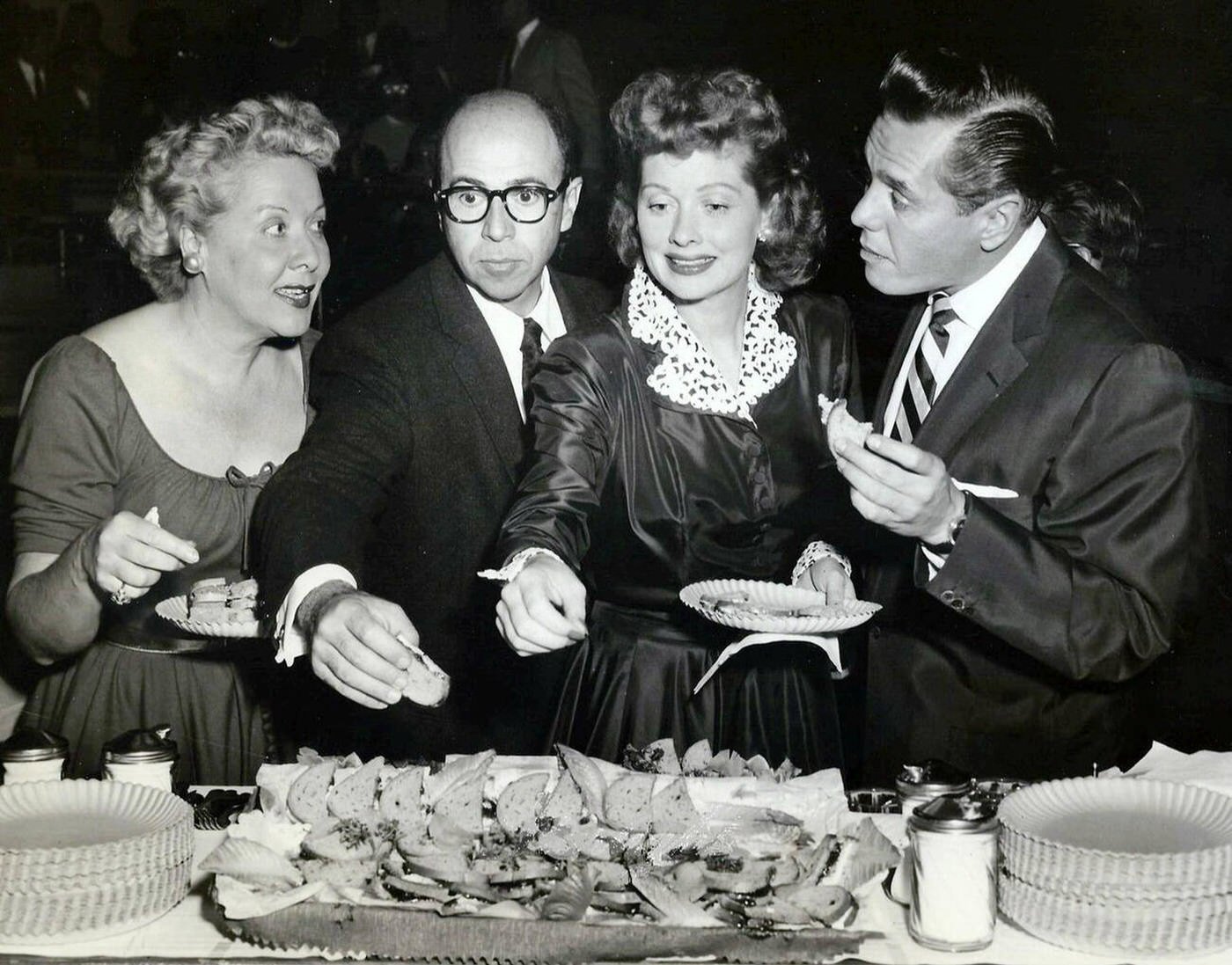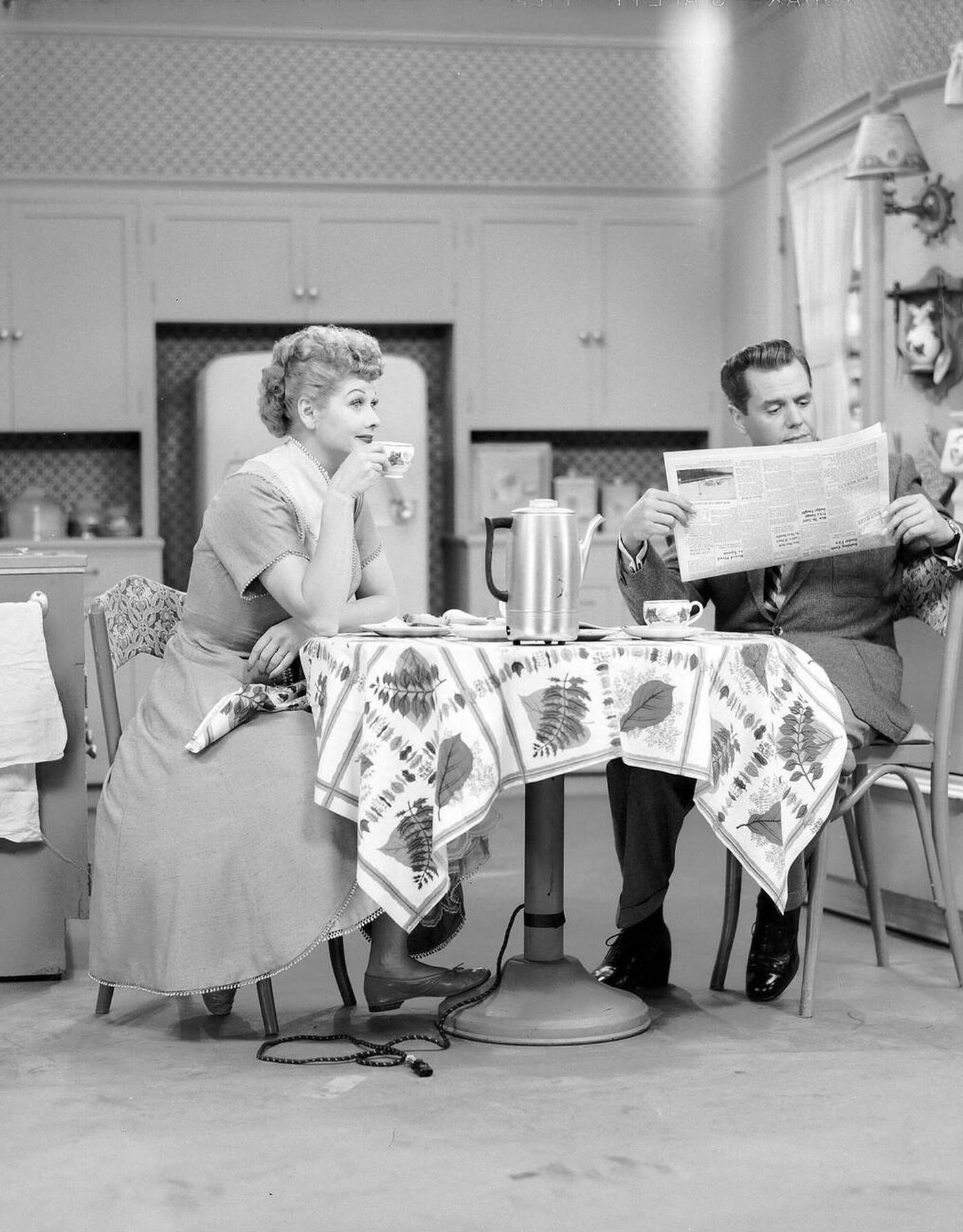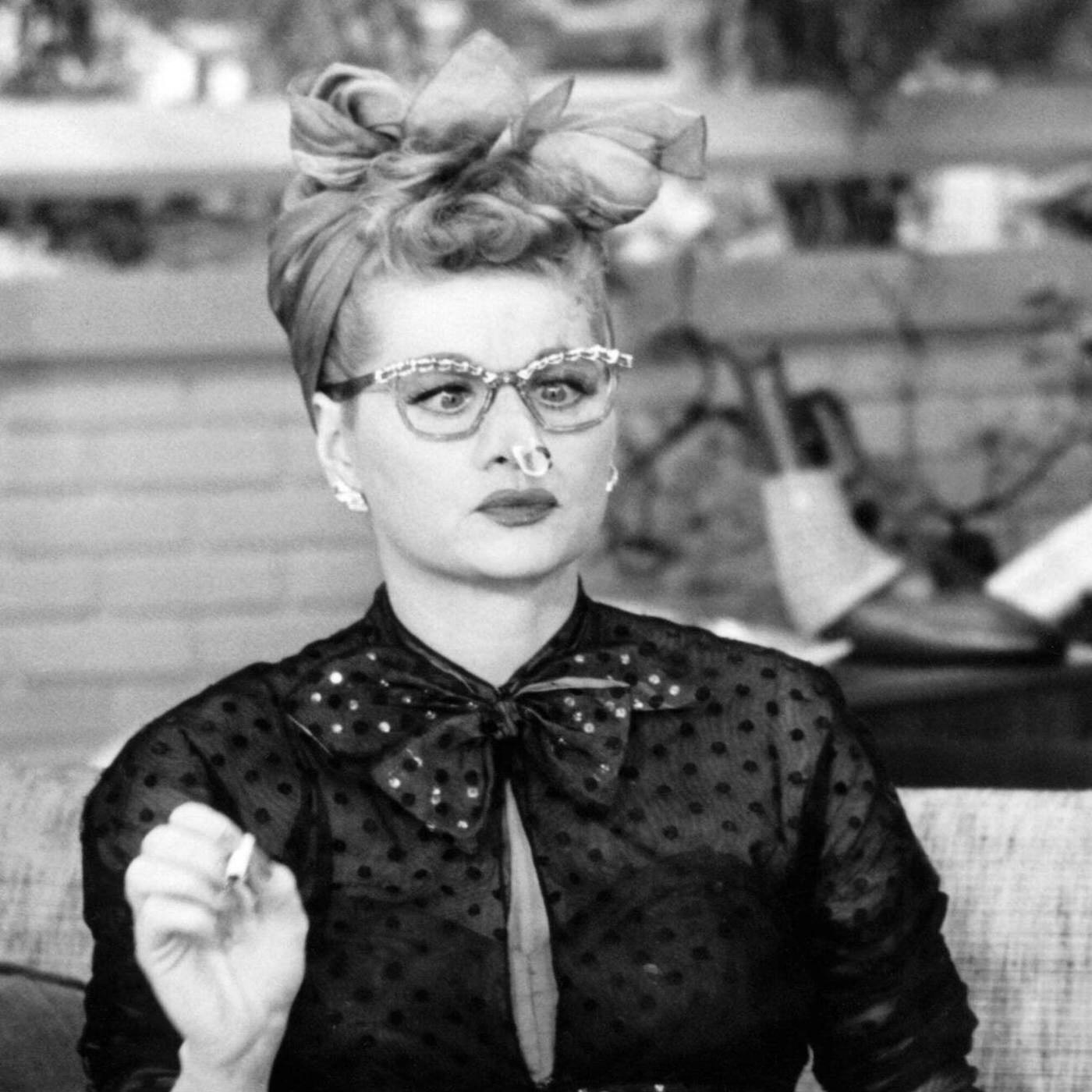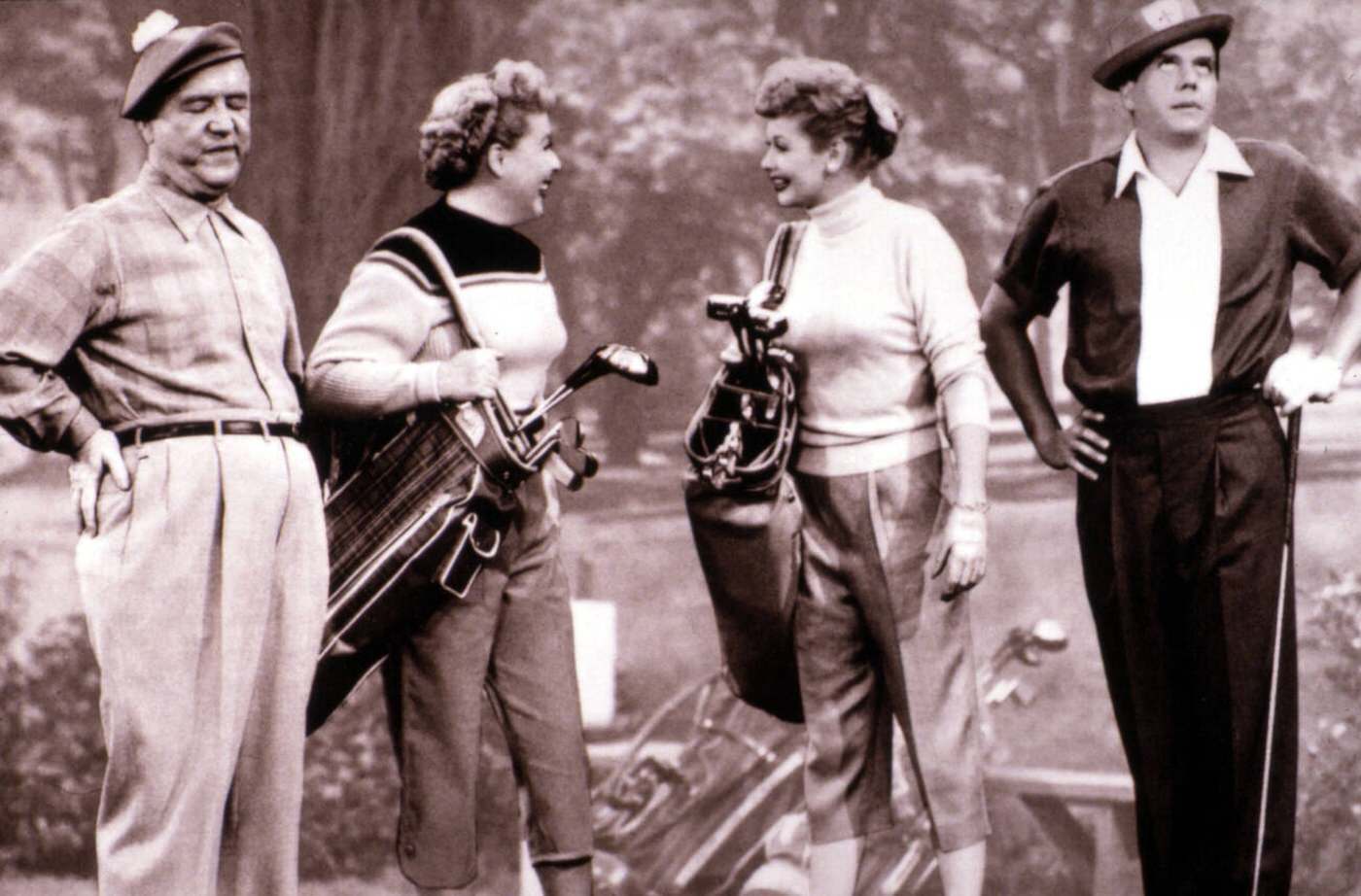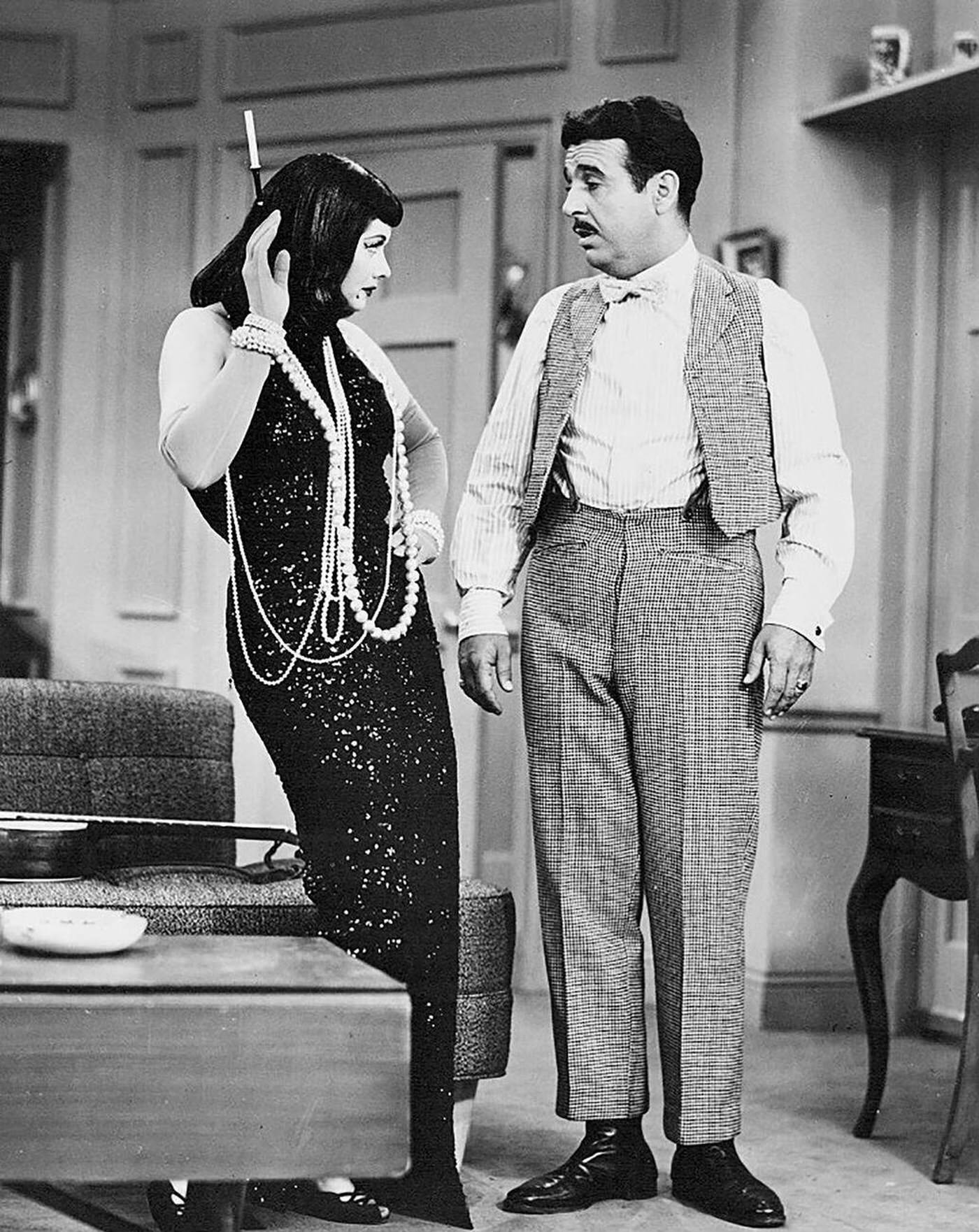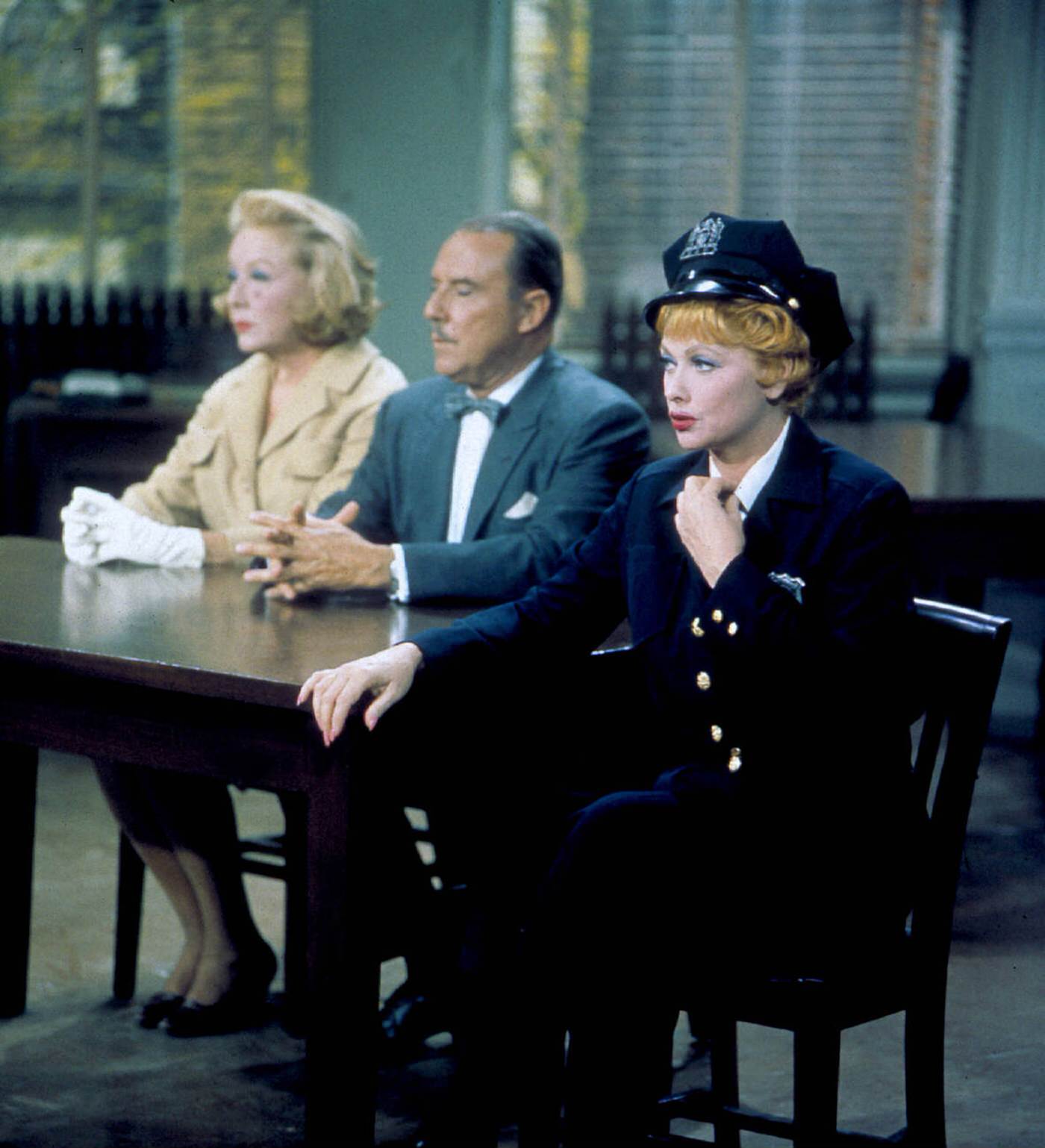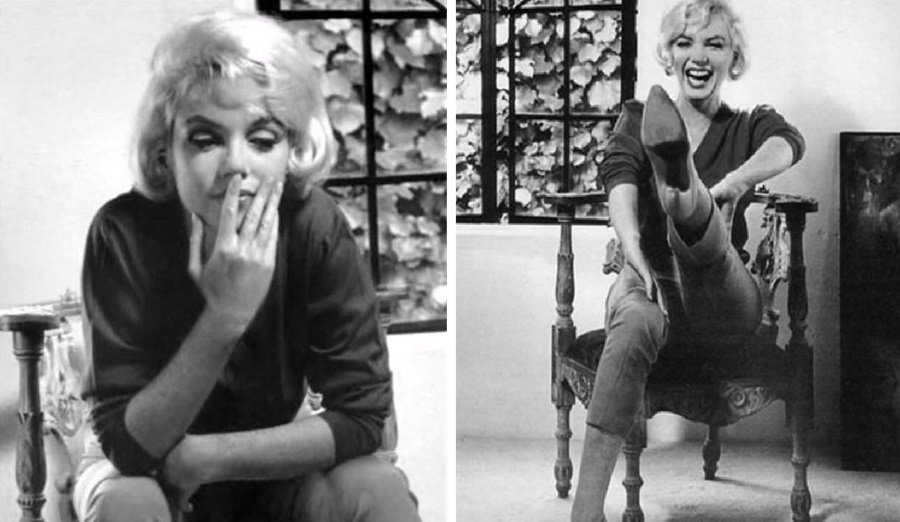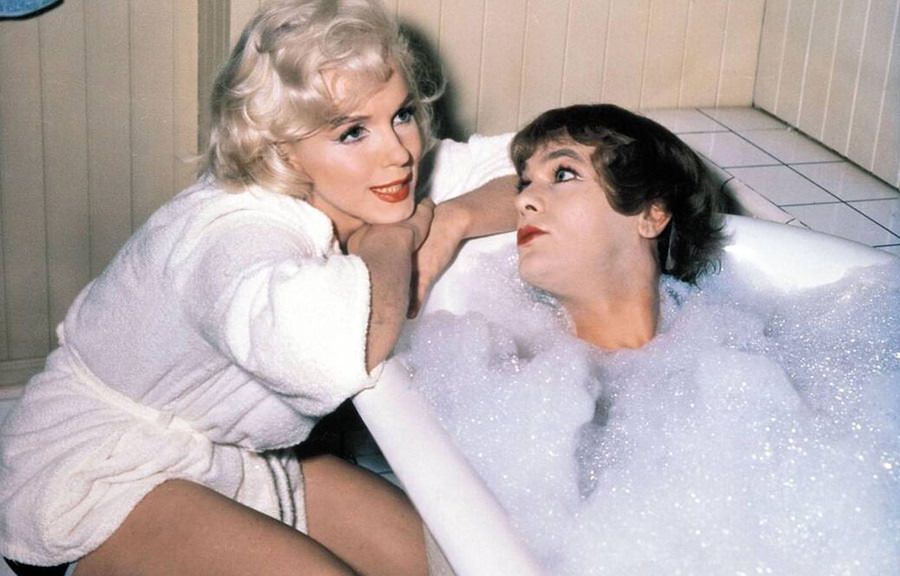“I Love Lucy” is an American television sitcom that first aired on October 15, 1951, on CBS. The show starred Lucille Ball and her real-life husband Desi Arnaz. The original run of the series ended on May 6, 1957, but it remained on television through reruns and syndication for decades. It became one of the most popular and influential sitcoms of all time.
The show was created by writers Jess Oppenheimer, Madelyn Pugh, and Bob Carroll Jr. It was produced by Desilu Productions, the company formed by Lucille Ball and Desi Arnaz. Desilu would later become a major force in television production.
Main Cast
The main character, Lucy Ricardo, was played by Lucille Ball. She played a housewife living in New York City. Her husband, Ricky Ricardo, was played by Desi Arnaz. Ricky was a Cuban bandleader who worked at a nightclub.
Their landlords and best friends were Fred and Ethel Mertz. William Frawley played Fred. Vivian Vance played Ethel. Fred was a former vaudeville performer, and Ethel often joined Lucy in her wild plans. The four characters formed the core group of the show.
Read more
Lucille Ball was already a known actress before the show, but “I Love Lucy” made her a household name. Her ability to perform physical comedy was a key part of the show’s humor. Desi Arnaz also gained widespread attention. His character often got frustrated with Lucy’s schemes, leading to the famous catchphrase: “Lucy, you got some ‘splainin’ to do!”
The Plot and Style of the Show
The plot of each episode usually focused on Lucy trying to join her husband’s showbiz world or coming up with a plan that led to trouble. She often lied or hid things from Ricky, which caused problems. Many episodes involved Lucy and Ethel teaming up to sneak into Ricky’s performances, try new jobs, or carry out wild ideas.
The humor came from misunderstandings, slapstick moments, and how far Lucy would go to achieve her goal. One famous episode involved Lucy and Ethel working in a candy factory, where they couldn’t keep up with a fast-moving conveyor belt of chocolates. Another well-known scene showed Lucy trying to stomp grapes in a giant vat, which led to a full-blown mess.
Ricky’s thick Cuban accent and quick temper were also played for laughs. He would often switch to Spanish when frustrated. Music was another important part of the show, especially Ricky’s nightclub performances, where Desi Arnaz played the conga and sang with a full orchestra.
Production and Filming
“I Love Lucy” was the first scripted television show to be filmed before a live studio audience using multiple cameras. This technique was developed by Desi Arnaz and the show’s production team. It involved using three cameras at the same time: one wide shot and two for close-ups. This method is now standard in television sitcoms.
The show was shot on 35mm film, which gave it higher quality than many other programs of the time. Because it was filmed rather than broadcast live, reruns were possible. This helped the show reach new audiences after its original episodes aired.
The live audience reactions were real, not added in later like canned laughter. This gave the show a more authentic feel and helped the actors know what worked during the performance. Lucille Ball preferred acting in front of a live audience because of her experience in theater and radio.
Popularity and Fame
“I Love Lucy” became a huge success almost immediately. During its six seasons, it was the most-watched show in the United States for four of those years. It was the first show to reach over 10 million viewers per episode in the early 1950s. At its peak, it drew about 44 million viewers a week. In 1953, when Lucille Ball gave birth on the show to her son “Little Ricky,” the episode drew more viewers than President Dwight D. Eisenhower’s inauguration the next day.
The show received many awards, including five Emmy Awards. It was also one of the first TV shows to feature a mixed-race couple, which was rare and bold at the time. Lucille Ball was American, and Desi Arnaz was Cuban. CBS executives were hesitant at first, but Ball insisted on casting her real-life husband in the role.
The show also made headlines off-screen. In real life, Ball and Arnaz had a rocky marriage. They eventually divorced in 1960, a few years after the series ended. Despite their personal issues, they remained business partners for a while and continued working together at Desilu Productions.
Locations and Changes Over Time
At the start, the Ricardos lived in a small apartment in Manhattan. Much of the humor in early episodes came from their everyday lives in the city. In later seasons, the characters moved to the suburbs of Connecticut. This shift allowed for new storylines, including new neighbors and rural problems.
During the sixth season, the format changed slightly. After the regular episodes ended in 1957, a series of hour-long episodes called “The Lucy-Desi Comedy Hour” aired from 1957 to 1960. These episodes featured guest stars and were less focused on everyday situations.
Behind the Scenes
Lucille Ball was heavily involved in how the show was made. She often gave input on scripts, costumes, and performances. Desi Arnaz handled the business side and production. He managed schedules, budgets, and the filming process.
The writers of the show included Jess Oppenheimer, who served as the head writer and producer, along with Madelyn Pugh and Bob Carroll Jr. They created hundreds of scripts together, focusing on simple plots that let the humor come from the characters’ actions and reactions.
The cast had their share of problems off-screen. William Frawley, who played Fred, had a reputation for heavy drinking. He did not get along well with Vivian Vance. The two actors did not speak much outside of work. Despite the tension, they performed well together on camera.
Vivian Vance was much younger than William Frawley, which led to discomfort. She reportedly disliked the idea of playing his wife. Still, Ethel and Fred became one of TV’s most iconic couples.
Technology and Business
The decision to film the show instead of broadcasting it live changed the television industry. Desi Arnaz and Lucille Ball made a deal with CBS. They agreed to take lower salaries in exchange for owning the filmed episodes. This gave them control over reruns, which became a major source of income.
Desilu Productions later grew into one of the most powerful studios in Hollywood. It produced other famous shows, including ‘Star Trek’ and ‘The Untouchables’.
The equipment used for “I Love Lucy” set a new standard. The use of bright lights and multiple cameras made editing easier and improved image quality. This allowed for better shots and smoother transitions between scenes. The three-camera setup was developed with help from cinematographer Karl Freund, who had worked on German Expressionist films and with directors like Fritz Lang.
Cultural Significance at the Time
During the 1950s, most American households were getting television sets for the first time. “I Love Lucy” became a family event, watched weekly by millions. It showed marriage, friendship, and daily life in a way that was funny and relatable.
The show included topics that were unusual for the time, like pregnancy. When Lucille Ball became pregnant in real life, the writers added it to the show. This was one of the first times a pregnancy was shown on American television. The word “pregnant” was not allowed, so the show used “expecting” instead.
The characters’ lives reflected the American Dream—modest success, hard work, and loyalty to family and friends. Lucy’s constant efforts to be more than a housewife also hinted at changing gender roles, even though she usually ended up returning to the status quo by the end of each episode.


